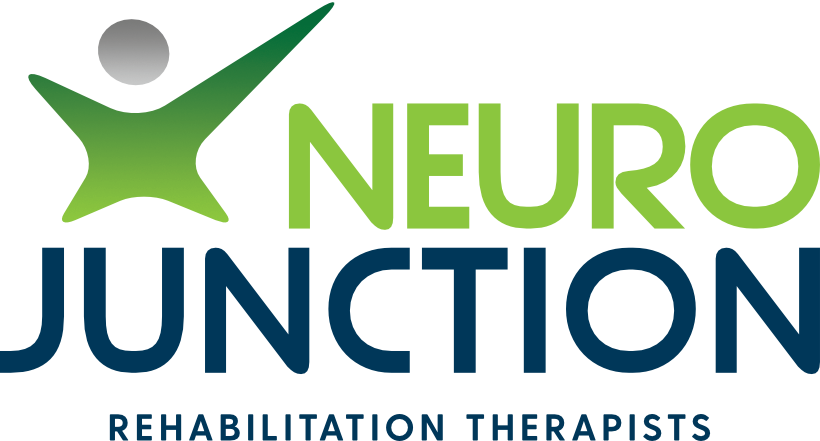Hypertonicity and Spasticity
What is Hypertonicity and Spasticity?
If you or someone you know have suffered from a brain injury, a stroke, or another neurological condition, your health professional may have discussed the terms hypertonicity or spasticity with you. These neurological impairments arise from a central (brain or spine) nervous system injury and refer to heightened muscle tone or increased resistance to passive movement. These terms are often used interchangeably; however, it is important to recognise the differences between the two....
Our physiotherapist Jess performing a Modified Tardieu Scale to assess spasticity in the wrist flexor muscle group.
Normal Tone
Tone is the resistance of muscles to passive stretch or the level of tension present in a muscle at rest.
Optimal muscle tone is high enough to resist the effects of gravity to support posture and movement, yet low enough to allow unrestricted freedom of movement.
Hypertonicity
Increased resistance to passive movement (limb moved by therapist at constant slow speed to assess)
Can be described as muscle stiffness, rigidity, overactivity.
Can lead to reduced range of motion and contractures, especially if accompanied with muscle weakness.
Spasticity
Increased resistance to FAST passive movements and muscle stretch.
Can cause muscle stiffness, a “catch” in the muscle when moving or spasms (clonus).
Spasticity and hypertonicity may lead to pain and/or discomfort, abnormal postures, contractures (permanent contraction of the muscle and tendon due to severe lasting stiffness and spasms), muscle, joint and/or boned deformities. As well as difficulty performing daily activities such as dressing bathing and walking. Sleep disruptions can result from painful spasms or muscle tightness related to hypertonicity and spasticity.
Spasticity may also have positive effects. Some people may rely on spasticity to maintain function, for example, a weak lower limb with spasticity may allow weight bearing for transfers.
What is the treatment for hypertonicity and spasticity?
Medical treatment options:
Medications:
Muscle relaxants and anti-spasticity medications.
Botulinum Neurotoxin A injections for localized treatment of spasticity.
Intrathecal Baclofen Therapy, which is an implanted pump into the spinal cord for the targeted delivery of spasticity.
Orthopedic Interventions:
Tendon lengthening surgery.
Tendon transfer surgery.
Serial Casting.
Physiotherapy treatment options:
A tailored exercise program that focuses on active motor training and strengthening. The program can also include stretching.
Repetitive task-specific practice.
Electrical stimulation for weakened muscles.
Gait retraining and functional retraining.
Daily positioning education.
Stand-alone pharmacological and surgical management of spasticity is not recommended, treatment should focus on a multidisciplinary team approach including medical, physiotherapy and other allied health therapy.
Electrical stimulation pad placement with the aim to increase the strength of our client’s muscles that move his wrist, hand, fingers and thumb to improve reaching and grasping, post Botulinum Toxin A injections of the opposing muscles.
Physiotherapy and Botulinum toxin A (BoNT-A)
Physiotherapy and injection of Botulinum Toxin A (BoNT-A) have become standard clinical practice for the management of adult and paediatric spasticity, if the spasticity is negatively impacting on function.
Physiotherapy pre-injection involves a comprehensive assessment to identify muscles with spasticity and the impacts on function. Physiotherapy post-Botox injections aims to improve range of motion, strength and functional retraining, which may include walking or arm activities. Referral to other health professionals including an orthotist for orthoses to improve walking patterns or an occupational therapist for equipment prescription may be beneficial.
What is Botulinum Neurotoxin A?
Botulinum Neurotoxin A is made from a toxin produced by a type of bacteria. The action of Botulinum Toxin A is that it blocks the signaling from the nerve to the muscle – causing the muscle to relax.
References
Khan, F., Amatya, B., Bensmail, D. and Yelnik, A., 2019. Non-pharmacological interventions for spasticity in adults: an overview of systematic reviews. Annals of physical and rehabilitation medicine, 62(4), pp.265-273.
Kinnear, B.Z., Lannin, N.A., Cusick, A., Harvey, L.A. and Rawicki, B., 2014. Rehabilitation therapies after botulinum toxin-A injection to manage limb spasticity: a systematic review. Physical therapy, 94(11), pp.1569-1581.
Williams, G., Singer, B.J., Ashford, S., Hoare, B., Hastings-Ison, T., Fheodoroff, K., Berwick, S., Sutherland, E. and Hill, B., 2022. A synthesis and appraisal of clinical practice guidelines, consensus statements and Cochrane systematic reviews for the management of focal spasticity in adults and children. Disability and Rehabilitation, 44(4), pp.509-519


